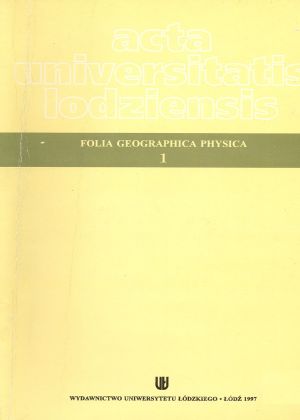Cechy rozwoju i zaniku lądolodu warciańskiego w Środkowej Polsce
Development and degradation of the wartanian ice-sheet in Central Poland
Author(s): Tadeusz KrzemińskiSubject(s): Environmental Geography
Published by: Wydawnictwo Uniwersytetu Łódzkiego
Keywords: Central Poland; Warta Glaciation; kames
Summary/Abstract: The South Great Poland ice-sheet lobe representing the Warta Glaciation stretched fro the Warsaw-Berlin pradolina that runs along the S2nd parallel (100 m above sea level) to the Wieluń Upland (272 m above sea level) in south (SI°N). The lobe was halted by topographic barriers of the Ostrzeszów Hills (284 m) and of the Łódź Upland (284 m) and left some signs of push moraines there. In central Poland the Wartanian ice-sheet spread southwards utilising the river valleys of the Prosna, Warta and Widawka (Fig. 1). The ice conserved the valleys, which is evidenced by 2-4 m thick tiJI well preserved on the slopes of buried valleys older than of Wartanian age (Fig. 2).The southern portion (SIOSO'N) of the South Great Poland lobe diverged into lower order lobes of Widawka, Warta and Prosna. The Widawka lobe, developed in the east, flew over the elevation of the Bełchatów Upland (200-220 m) and left signs of diffluence in the Piotrków Plain (Fig. 3). The Warta lobe crept up onto the northern edge of the Wieluń Upland (200-250 m) where the ice-sheet dissipated. The Prosna lobe reached the Wieruszów Upthrust at a similar altitude.Climatically induced process of the ice-sheet degradation began with the development of crevasses and cracks in the places of irregularities in the topography of the sub-Quaternary bedrock. This led to the formation of marginal zone delineated by the maximum extend of the ice-sheet and by its extent during the main stagnation phase, when the contact with the active ice mass was retained.Inside this zone the landforms associated with stagnant ice downwasting are found. These include kames, karne terraces, karne plateaux, kettles, post-glacial depressions, small outwash plains, latent fragments of pradolinas. Topographic watersheds separate former inward and outward meltwater flow directions.Four subsequent phases of the ice-sheet degradation and the corresponding zones: I - Dzialoszyn, II - Sieradz, III - Niemysłów and Kalisz zones comprise a similar range of landforms and the pattern of flow directions inherited from the areał deglaciation (Fig. 3 and 4). The formation of the zones can be related to the elevations of the sub-Wartanian base, mainly of Mesozoic and Neogene age. Groups of kames (Fig. 1 and 5) are also the evidence of the areal deglaciation. On elevations of the substratum elongated crevasses developed in the downwasting ice. They were then filled with gravel and sand - mainly of inglacial or supraglacial origin. The areas situated between subsequent deglaciation zones and the groups of karnes are usually build of till that forms low relief of undulating ground moraine.
Journal: Acta Universitatis Lodziensis. Folia Geographica Physica
- Issue Year: 1/1997
- Issue No: 1
- Page Range: 47-65
- Page Count: 19
- Language: Polish

